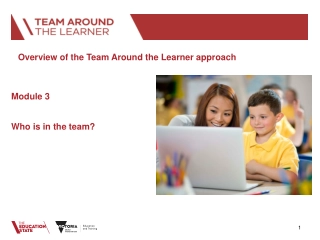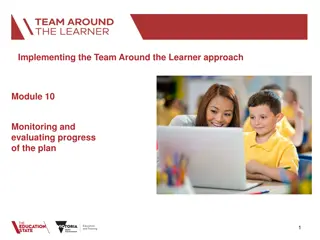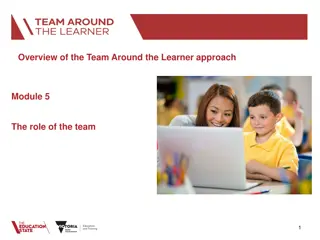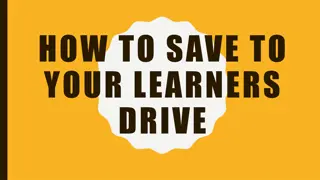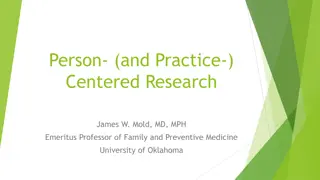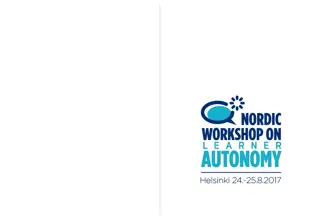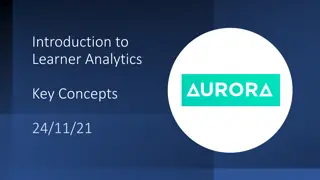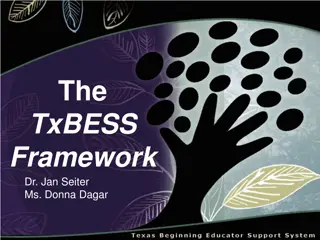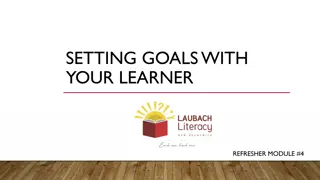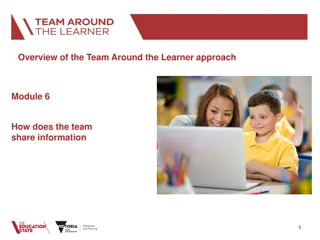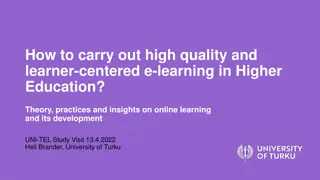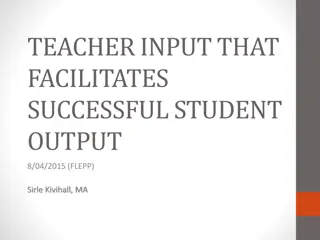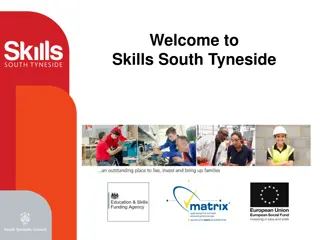Learner-Centered Teaching Methods
Enhance student creativity and innovation with learner-centered techniques that focus on individual needs, styles, and goals. Encourage cooperative learning, interactive classes, and whole-language education for a holistic approach to teaching.
Uploaded on Feb 24, 2025 | 1 Views
Download Presentation

Please find below an Image/Link to download the presentation.
The content on the website is provided AS IS for your information and personal use only. It may not be sold, licensed, or shared on other websites without obtaining consent from the author.If you encounter any issues during the download, it is possible that the publisher has removed the file from their server.
You are allowed to download the files provided on this website for personal or commercial use, subject to the condition that they are used lawfully. All files are the property of their respective owners.
The content on the website is provided AS IS for your information and personal use only. It may not be sold, licensed, or shared on other websites without obtaining consent from the author.
E N D
Presentation Transcript
1 Indawan Syahri FKIP Universitas Muhammadiyah Palembang
BANDWAGON TERMS 2 Learner-centered Cooperative Interactive Whole-language Based Content-centered Communicative task
1. LEARNER-CENTERED TEACHING 3 Learner-centered >< teacher-centered Techniques that focus on or account for learners needs, styles, and goals. Techniques that give some control to the students (e.g., group work or strategy training). Curricula that include the consultation and input of students and that do not presuppose objectives in advance. Techniques that allow for students creativity and innovation. Techniques that enhance s student s sense of competence and self-worth
2. COOPERATIVE LEARNING 4 A curriculum or classroom that is cooperative usually involves the above learner-centered characteristics. The students work together in pairs and groups to share information. The students are a team whose players must work together in order to achieve goals successfully. The term cooperative emphasizes on collaborative efforts of students and teachers working together to pursue goals and objectives.
3. INTERACTIVE LEARNING 5 Interactive classes will most likely be found: Doing a significant amount of pair work and group work Receiving authentic language input in real-world contexts Producing language for genuine, meaningful communication Performing classroom tasks that prepare them for actual language use out there Practicing oral communication through the give and take and spontaneity of actual conversations Writing to and for real audiences, not contrives ones
4. WHOLE LANGUAGE EDUCATION (1) 6 Initially the term came from reading research and was used to emphasize The wholeness of language >< fragmented language The interaction and interconnection between oral language and written language The importance of the written code as natural and developmental, just as the oral code is 1. 2. 3.
4. WHOLE LANGUAGE EDUCATION (2) 7 Whole language is a label that has been used to describe: Cooperative learning Participatory learning Students-centered learning Focus on the community of learners Focus on the social nature of language Use of authentic, natural language Meaning-centered language Holistic assessment techniques in testing Integration of the four skills
5. CONTENT-CENTERED EDUCATION 8 The integration of content learning with language teaching aims. More specifically, it refers to the concurrent study of language and subject matter, with the form and sequence of language presentation dictated by content materials (Briten, et al., 1989:vii) Language becomes the medium to convey informational content of interest and relevance to the learners. Teachers teach the concepts and skills of various disciplines, professions, and occupations, and/or teach in teams across disciplines.
6. TASK-BASED LEARNING (1) 9 Task-based learning is not a new method, it simply puts task at the center of one s methodological focus. It views that the learning process as a set of communicative tasks that are directly link to the curricular goals they serve, and the purposes of which extend beyond the practice of language for its own sake.
6. TASK-BASED LEARNING (2) 10 Task-based learning is a perspective that you can take within a CLT in terms of a number of important pedagogical purposes: Do they ultimately point learners beyond the forms of language alone to real-world contexts? Do they specially contribute to communicative goals? Are there elements carefully designed and not simply haphazardly or idiosyncratically thrown together? Are their objectives well specified so that you can at some later point accurately determine the success of one technique over another? Do they engage learners in some form of genuine problem- solving activity?


